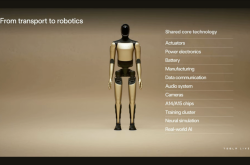E-commerce Revolutionizes 'Spring Festival Consumption Patterns' Among Youth in Small Towns by 2025
![]() 02/07 2025
02/07 2025
![]() 531
531
[Original by Tide Business Review]
On the dawn of the Lunar New Year, as the chill still lingered in Qinghe County, Xingtai, Hebei, Zhang Yu, a post-95s youth, was already waiting outside the express station on his electric bike. Beside him stood three boxes of vibrant cherries, standing out against the quaint townscape.
Gazing at those cherries, Zhang Yu's mind wandered back two decades. 'During the New Year, my father would carry a heavy sack of flour in one hand and hold me in the other, navigating through the bustling annual market.'
Today, with a few taps on his phone, Zhang Yu can have these exotic fruits from Chile delivered straight to his doorstep, traversing mountains and seas.
This juxtaposition of 'past and present' serves as a vivid footnote to the evolving Spring Festival consumption trends in China's tier-3 and below markets.
While traditional methods of purchasing New Year goods persist in local markets, a consumer revolution ignited by the mobile internet is quietly redrawing the 'Spring Festival consumption map' of youth in small towns, facilitated by JD.com's delivery trucks and Douyin's live streaming rooms.
In Zhang Yu's father's generation, pig hind legs, bulk candies, and boxed instant noodles dominated the New Year shopping list.
'When I was young and accompanied my father to the market, our criteria were simple: durability and filling,' Zhang Yu reminisced, scrolling through his JD.com orders. Chilean cherries, ready-made Buddha Jumps Over the Wall dishes, and robot vacuum cleaner gift sets starkly contrast the crumpled shopping lists of his father's era.
Behind this shift in Spring Festival consumption patterns in small towns lies not only a change in consumer focus but also the bridging of the 'last mile' in commodity circulation within tier-3 and below markets. According to Ministry of Commerce data in 2025, sales of imported fruits in county markets during the Spring Festival continued to surge, while transactions of smart home appliances maintained a high growth rate.
As the logistics network surpasses the 'next-day delivery' threshold, youth in small towns enjoy increasingly diverse options for New Year goods: the development of cold chain logistics allows them to replace traditional apples and oranges with Chilean cherries transported in refrigerated trucks; the hectic pace of life makes ready-to-eat New Year's Eve dinner sets a new solution for the 'kitchen battlefield'.
Today, for tier-3 and below markets, New Year goods are no longer mere 'survival supplies' but are evolving into lifestyle products.
Data from e-commerce platforms underscores the astonishing growth potential of tier-3 and below markets. According to Douyin Life Services' '2025 Spring Festival Consumption Data Report', 'traveling for the New Year' and 'returning home to visit relatives' drove rapid consumption growth in small cities below the third and fourth tiers during this year's Spring Festival. From January 28th to February 3rd, orders for dining, drinking, and entertainment on Douyin in places like Zigong, Sichuan; Mudanjiang, Heilongjiang; and Ma'anshan, Anhui increased by over 100% year-on-year. Group-buying orders on Douyin in characteristic small cities such as Jingmen, Hubei; Chaozhou, Guangdong; and Linfen, Shanxi also surged by 93%, 90%, and 73%, respectively.
Meanwhile, under the influence of content e-commerce, in Huang'an Town, Heze, Shandong, post-00s Li Meng taught her mother to snatch Xinjiang dried fruits through Douyin live streams. 'The anchor's live tasting is more intuitive than the market's hustle and bustle,' Li Meng said.
Enhanced by 5G signals, this 'see-and-buy' experience is reshaping the traditional trust system, and the continuous growth of e-commerce consumption during the Spring Festival in county areas heralds profound changes in commercial infrastructure.
'It's not just the Spring Festival; the real consumption potential lies in tier-3 and below markets.'
An undeniable fact is that tier-3 and below markets have emerged as another growth driver for platform e-commerce economies. Moving towards counties and villages, the e-commerce economy is accelerating its descent to the 'last mile'.
Today, the 'capillary project' that e-commerce giants have relentlessly pursued for years has yielded remarkable results. JD Logistics offers 24-hour delivery in 92% of districts and counties, Pinduoduo's hundred billion subsidy program reaches directly to village stores, and even Meituan has launched an instant service of 'delivery during the Spring Festival, New Year goods arrive within hours' in some township markets. E-commerce platforms continue to penetrate deeper into tier-3 and below markets, delivering goods and services directly to the doorsteps of youth in small towns.
The rapid expansion of e-commerce platforms into non-urban consumer markets is not solely driven by the pursuit of tier-3 and below market dividends; it is also a result of proactive platform promotion and the current development of rural infrastructure. In other words, the improvement of the 'platform + facility' combination has become pivotal in driving rural consumption growth.
For platform providers, as traffic dividends in first- and second-tier cities gradually diminish, moving downwards and expanding becomes an inevitable path for major e-commerce platforms to seek effective growth strategies. Data from Zhiyan Consulting shows that as of June 2024, the number of rural internet users in China had reached 304 million, accounting for 27.7% of the total internet user population, and the overall size of the rural e-commerce market had exceeded 2.5 trillion yuan.
In tier-3 and below markets, especially in counties and townships, short video and live streaming e-commerce platforms stand out. Platforms like Douyin boast a vast user base, a lower threshold, and more engaging video content, effectively converting these groups into potential buyers.
Specifically, on the one hand, content platforms provide tier-3 and below markets with new entertainment options, increasing user retention. Recent data from QuestMobile shows that as of September 2024, the number of short video users had surpassed 1 billion, with users in lower-tier areas spending more time browsing their phones and being more active.
On the other hand, short video platforms are user-friendly, with increasing numbers of parents starting to 'shoot a Douyin' and share their daily lives; even for live streaming sales, all they need to do is go live, play the video, and hang the product link to start selling directly.
Of course, besides the rise of internet platforms, logistics and supply chains have also played a catalytic role in the collective descent of the e-commerce economy.
According to data from the State Post Bureau, in 2023, China had cumulatively established 289,000 village-level integrated postal and delivery service stations and 190,000 village post offices, with post and express cooperation covering over 70% of organized villages, and express delivery services reaching 95% of organized villages nationwide.
Coupled with the self-built logistics of companies such as SF Express and JD.com, bridging the 'last mile' has become a reality. Taking JD Logistics as an example, JD.com currently has over 2,000 production areas and industrial belts nationwide, achieving the sinking of facilities, technology, and talent, allowing more and more products to enter and exit rural markets, truly realizing the goal of 'e-commerce entering rural areas, agricultural products sold nationwide'.
With express logistics in place, it is also necessary to cooperate with the continuously developing supply chain. The 'Implementation Opinions on Promoting the High-Quality Development of Rural E-commerce' issued by the Ministry of Commerce and other nine departments proposed the formation of a unified supply chain encompassing goods collection, processing, distribution, and online sales to enhance the efficiency of rural product uploads.
This means that with the continuous improvement of logistics and supply chains, youth in small towns can enjoy better timeliness and faster shopping experiences. Consequently, as new consumption trends and retail channels enter tier-3 and below markets, a new round of market competition is unfolding, and the industry's 'capillary war' has begun.
Tier-3 and below markets are remote, users demand faster delivery, and their purchasing power is not comparable to that of big cities, making them more price-sensitive. Therefore, in the competition for tier-3 and below markets, platforms must compete not only on timeliness but also on various aspects of cost-effectiveness.
For instance, JD Express's efficient next-day delivery, coupled with its offline home appliance stores in various townships across the country, makes it the preferred choice for speed-conscious consumers. This delivery efficiency advantage is difficult to shake by current subsidies and low-priced e-commerce impacts.
Moreover, Meituan has also extended its internet services from big cities to townships, opening up preferred services in some supermarkets. From this perspective, even Pinduoduo, renowned for its low prices, finds it challenging to compete against multiple rivals.
On the other hand, short video platform giants with hundreds of millions of daily active users are also accelerating their layout in rural e-commerce. Douyin, Kuaishou, and even video number e-commerce closed loops have emerged as powerful competitors in this race.
However, amidst the intense competition, the long-standing 'chronic issues' of rural markets—counterfeit and shoddy products, false advertising, 'three no's' products (no production date, no quality certification, and no producer), unreasonable prices, expired products, etc.—have gradually become unacceptable to users in tier-3 and below markets. These issues pose a test for e-commerce platforms.
According to the results of the 'Report on the Rural Consumption Environment and Related Issues Survey' released by the China Consumers Association, among the frequently encountered product problems faced by rural residents, the issue of 'three no's' products accounted for the highest proportion, reaching 28.9%; followed by inflated prices and false pricing, accounting for 27.1%.
These phenomena indicate that for the industry, ensuring quality and providing good quality standards and packaging specifications is the key to standing out and winning in tier-3 and below markets.
This is crucial for e-commerce platforms. After all, every consumer hopes that while having access to a wide variety of goods, every product they receive meets their expectations.
In the era of the digital economy's explosive growth, the rapid descent of the internet has made over 500 million rural people an indispensable consumption force in the Chinese economy. For platforms, the surge in rural online retail and purchasing power makes the collective descent of e-commerce not merely a commercial choice driven by performance growth but also a crucial factor in winning the future battle of e-commerce.
Written at the end:
The intergenerational shift in New Year goods consumption in tier-3 and below markets is a microcosm of the evolution of Chinese commercial civilization. As Douyin live streams become new-style temple fairs and JD.com delivery trucks transform into modern peddlers, the simple swipe of a fingertip by youth in small towns completes not just a shopping act but also bridges the decades-long urban-rural consumption gap.
This silent revolution validates a commercial truth: there is no true tier-3 and below market, only unsatisfied consumer equity demands.
In the future, with the further development of e-commerce and the continuous release of demand in tier-3 and below markets, e-commerce platforms will continue to innovate technologically and upgrade services, leading to more profound changes in China's business landscape. E-commerce and traditional commerce will jointly shape a more diverse and prosperous consumer market through continuous integration and competition.







